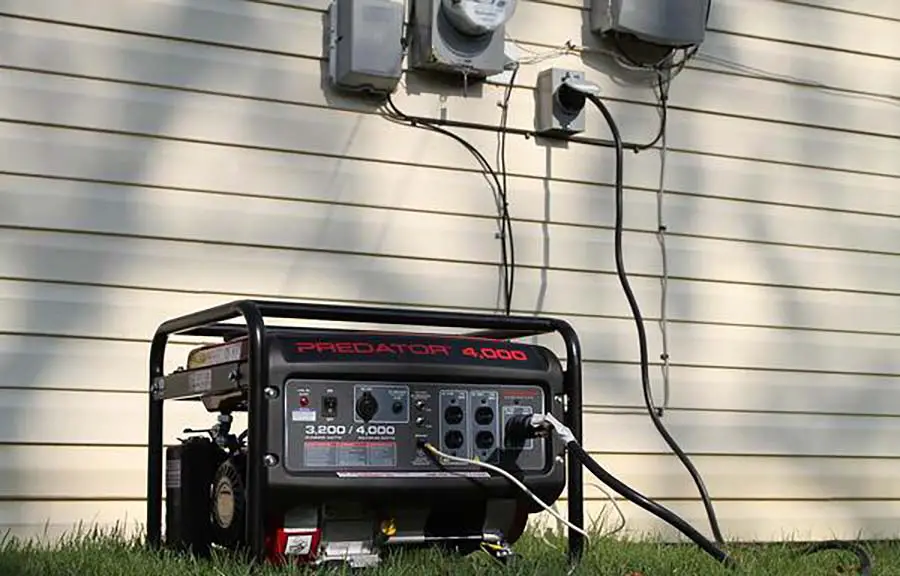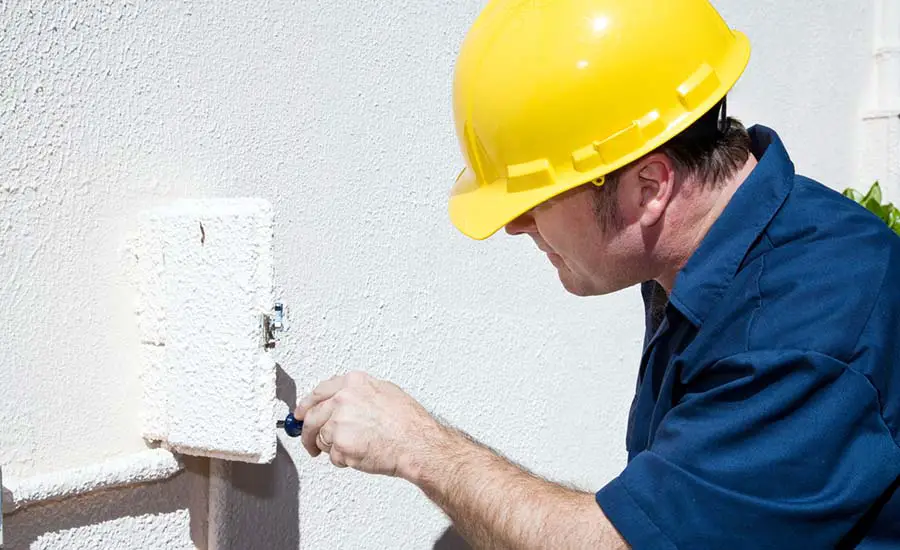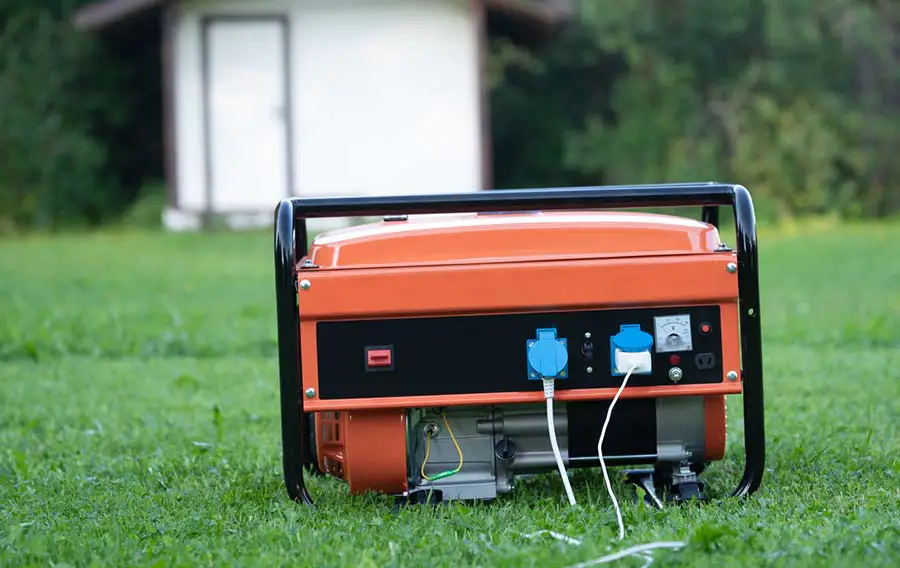
Typically, a transfer switch acts as your home’s circuit breaker panel and transfers the electric power supply to the generator instead of the primary electric grid. But how much you spend on this crucial component depends on your existing electrical setup.
Manual transfer switches cost $300-$500, while automatic switches are $400-$800. Additionally, expect to pay $100-$120 to have an electrician install the transfer switch to your portable generator. Many factors, including who you hire and how much work you do yourself, can affect the final price.
It would be best to know what you will spend on the transfer switch to have the money ready for the work. This article discusses why you must have a transfer switch, whether you should opt for a manual or automatic switch, and the factors that affect the device’s installation costs.
The Cost to Install a Transfer Switch for a Portable Generator
Now that you understand the importance of a transfer switch and the difference between manual and automatic versions, it is time to do the math.
The factors below will influence the final value you would expect to pay:
| Transfer Switch Cost Factors | Estimated Price Range |
|---|---|
| The state of your existing electrical network | – $850-$4,000 for a new electric panel – $400-$1,750 for a sub-panel instead – $320 -$1,000 for professional labor |
| The materials you must buy | – $300-$500 for a manual switch or $400-$800 for an automatic switch – $10-$320 for a generator to house cord – $13-$300 for a power inlet box |
| The type of electrician you hire | – $40-$50 hourly for an apprentice – $50-$70 hourly for a journeyman electrician – $100- 120 hourly for a master electrician – $75-$125 as call-out fees |
| The time it takes to install the switch | – $80-$500 for two to four hours of professional labor |
| How much sweat equity that you intend to put in | – $40-$120 hourly savings if you buy and install the components – Savings of $80-$500 if you install a transfer switch on your own |
| The cost of authorization in your locale | – $10-$500 for an electrical permit – $100-$400 for inspections |
1. The State of Your Existing Electrical Network
If your existing electrical network is not up to code, you may have to begin there when installing a transfer switch for your portable generator. And your first order of business would be to upgrade the relevant components.
For example, if your existing main service panel box needs upgrading, you must buy and replace it. But the cost of that will depend on the amperage, the number of circuits, and where you are. The brand and quality will also influence the overall costs.
So, expect to pay anywhere from $850 to $4,000 to buy the electric panel. It will take another 8 to 10 hours for an electrician to install it. And such professionals charge hourly prices of $40 to $100. For that reason, you should also include an additional $320 to $1000 for the labor.
On the other hand, if the regular electric panel is full but in excellent condition, you need a subpanel. In that case, your budget would be a bit on the lower side, and you may spend $400 to $1,750.
2. The Materials You Must Buy
If you do not need to make upgrades, you should think about the transfer switch materials you need to buy. And then, consider the price range for each of them.
Generally, it will cost you around $300 to $500 to buy a manual transfer switch and $400 to $800 for an automatic transfer switch.
But you would also need a heavy-duty cord that connects your generator to the power inlet box, which then connects to the transfer switch via another internal cable. You can often find the generator to house cords for anywhere from around $10 to $320.
The power inlet box is another crucial component required to install a transfer switch for a portable generator. These boxes cost anywhere from $13 to $300.
3. The Type of Electrician You Hire
The overall cost of professional labor will largely depend on the electrician you hire. Typically, the cost of hiring an electrician will vary depending on the electrician’s level of experience.
Hiring an apprentice to fix an automatic transfer switch would be ill-advised. However, you could do so for the installation of a manual switch.
When hiring an electrician, expect to pay:
- $40 to $50 per hour for an apprentice
- $50 to $70 per hour for a journeyman electrician
- $100 to 120 per hour for a master electrician
And whereas apprentice and journeymen electricians would require an average call-out fee of $75, a master electrician would charge you $125, which is something to consider.
4. The Time It Takes To Install the Switch

A transfer switch is usually a one-day affair so long as no unforeseen circumstances occur and all your paperwork is in order.
Considering that it takes two to four hours to install a transfer switch for a portable generator, in the end, you should budget for about $80 to $500 in professional labor, depending on the type of electrician you hire.
5. How Much Sweat Equity That You Intend To Put In
How much sweat equity you put in can significantly reduce your transfer switch installation costs. It would be wise for you to consult a professional or research and buy a transfer switch and other related components beforehand to minimize the time an electrician takes to get them for you.
Remember, they do not shop for these things for free. They will charge you an hourly rate for that too. And that may significantly increase what you would pay in the end to install a transfer switch.
For example, if your electrician needs another hour to buy the transfer switch for you, you could end up paying $40 to $120 for extra labor. So, instead of handing over that money, you could put in the sweat equity and go and buy the things you need yourself.
And while no homeowner should install an automatic transfer switch, you could do so if you have a manual transfer switch. However, you must be well-informed and consult the switch manual carefully.
If you choose to install the manual transfer switch, you would save the $80 to $500 or so you would have paid in labor.
6. The Cost of Authorization in Your Locale
Whenever one modifies the existing electrical system, the chances are that permits will be a requirement. And they are not free.
Depending on where you are and the project you intend to do, you should expect to pay anywhere from $10 to $500 for an electrical permit. And it would be best to let a licensed electrician get this permit since some local authorities may not give it to you.
You may also be required to have an inspection before you can begin using your transfer switch with your portable generator. That’s usually a requirement whenever a home’s electrical system undergoes modification. In that case, it would be wise to budget an additional $100 to $400 per session.
Why Should You Have a Transfer Switch for Your Portable Generator?
Once you’ve added up the total costs of installing a transfer switch, you probably want to forgo the project altogether. But that would not be wise, especially for generators with a capacity of 5kW or more.
Below are some reasons why it would be best to invest in the crucial electrical device, even if it comes with a significant sticker shock:
1. Increases the Number of Appliances You Can Power
Generally, a transfer switch works as a miniature circuit breaker panel. As a result, it is usually installed next to the main circuit breaker panel and developed so that you can decide what circuits you want to switch on when using a generator.
For that reason, transfer switches enable you to power the standard appliances and those hardwired into the electrical system, such as your water heater. So, if you do not install one, you would be limited in what you can run when the main power supply is off. As a result, you would have to do without the hardwired electrical devices, which could be pretty inconvenient for your entire household.
2. Eliminates the Need for Numerous Extension Cords
Transfer switches are by no means the only way for you to connect your generator to the home. You also have the option of using outdoor-rated extension cords.
In such a case, you would connect an extension cord into the generator on one end and connect the other indoors. Unfortunately, for appliances that use a lot of power, you would need to invest in multiple extension cords for connection to prevent an overload.
It is also worth noting that many of these special extension cords are pretty long – anywhere from 10 to 30 feet on average. And some are even longer and may exceed 50 feet. Therefore, if you have numerous such cords, you would have tripping hazards, which could be even more dangerous when you are close to a working generator.
Also, if you select the wrong extension cords, you could stress your generator and fail to power your electrical devices correctly. And that could eventually damage them and cost you more money to repair or replace them in the future.
In addition, if you place the cords under flammable materials, such as carpets, they could lead to heat buildup, especially if they are undersized. And the result could be a fire you did not anticipate.
3. Prevents Backfeeding the Grid

Backfeeding refers to reversing the electrical flow to move in the opposite direction. Suppose your power comes back on and the generator is also on. In that case, it will overload your home with electricity. And it will also send that power into the electric grid in the opposite direction. The former scenario tends to lead to the destruction of electronics and possibly, fires. But the latter has even more severe implications.
Backfeeding the grid is dangerous for several reasons. Due to the re-energizing of power lines, anyone who comes into contact with them when backfeeding occurs could get severe injuries.
In addition, utility workers could end up electrocuted to death. Also, you could destroy your neighbors’ properties and possibly harm them.
Due to the dangers posed by back-fed electricity, most local laws have made the process illegal. So, to avoid getting into legal trouble or harming yourself and others, it would be wise to ensure that electricity from the generator and the electrical grid never overlap. And that is where a transfer switch comes in. The device will ensure that such a situation does not occur and cause disaster.
4. Enables You to Prioritize Your Energy Needs
Most portable generators cannot meet all the energy needs like power from the electrical grid usually does. Therefore, when your main power supply is off, you may have to prioritize your energy needs.
When a generator has a low capacity, it can meet most of your needs, but not simultaneously. So, if you want to run a high-energy appliance, you may have to switch off several other devices to ensure there is enough power. And then, when the electronic device with high energy demand is no longer in use, you can power several devices to accomplish other tasks.
Typically, it is more challenging to prioritize your energy needs when dealing with so many extension cords. Things could become confusing.
However, if you have a transfer switch, all you would need is to switch on the circuits you need and off those you don’t need at the time. Managing your power usage is easier because the transfer switch has every switch in place for that purpose.
5. May Be Required By Law
Many building codes tend to require the installation of transfer switches for homeowners using portable and whole-home generators.
You need to ensure that you adhere to the National Electric Code and stay out of legal trouble. So, it would be wise to install a transfer switch. Also, doing so could be the only way to obtain insurance compensation if anything happens to your home because of an electric fire.
Manual Vs. Automatic Transfer Switches
Transfer switches tend to fall under the manual or automatic categories. Each type has its fair share of pros and cons. For that reason, it would be best for you to learn what’s most suitable for a portable generator and why.
Automatic Transfer Switches
Automatic transfer switches usually monitor electricity signals. And when you lose power, the device will automatically transfer your load to a secondary power source, such as the generator.
Using an automatic transfer switch for long-term power backup generators makes sense. Also, it offers excellent transfer services for equipment connected to a power source using one extension cord only.
The most significant advantage of an automatic transfer switch is that you don’t have to keep on going to the switch all the time when the power goes off. The device will sense the change and switch on its own, which can be pretty convenient.
Manual Transfer switches
Manual transfer switches help connect the generator to the home like their automatic counterparts. However, if your primary power source is no longer in use, you need to go to the switch, pull a lever or handle, and then switch between the mains.
The most significant advantage of a manual transfer switch is that it cannot switch on the generator if you are not around. So, if you do not want to waste power when you are away from home, it is an excellent choice.
In addition, it is usually much cheaper than the automatic transfer switch. So, if you must install such a device, you can do what is legally required, even if you have a limited budget.
Final Thoughts
You cannot work with a fixed value where transfer switch costs for a portable generator are concerned. So many factors influence the final tally that working with a reasonable price range makes more sense. That way, you could err on the side of caution and overestimate. And if you end up spending less, you could use the remainder of the money for other projects in your home.

